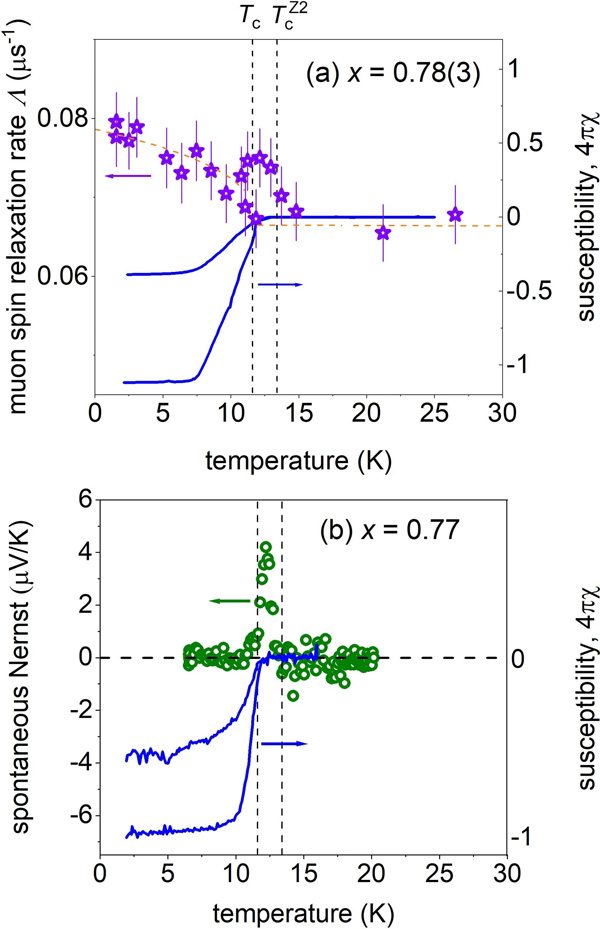PC9-4-INV
Broken time‐reversal symmetry in 122‐type iron‐based superconductors
Dec. 1 17:00-17:25
*Vadim Grinenko1
Tsung-Dao Lee Institute, Shanghai Jiao Tong University, Shanghai, China1
Any superconducting state breaks spontaneously U(1) gauge symmetry at the superconducting transition temperature (Tc). In some cases, a superconducting state breaks additional symmetries such as rotational lattice symmetry or time-reversal symmetry (Z2). Usually, multiple symmetries are broken at T* ≤ Tc. However, it was predicted theoretically that fluctuations might push Tc below T*, giving room for a new quantum state of matter, which is different by symmetry from superconducting and normal states [1]. Here, we study the multiband Ba1-xKxFe2As2 system experimentally. We found that at high K doping levels topological changes of the Fermi surface (Lifshitz transition) trigger a superconducting state that breaks time-reversal symmetry (BTRS) [2,3]. The BTRS superconducting state exists at the narrow doping range 0.7 ≤ x ≤ 0.85. More intriguing is that at x ~ 0.8, we found a BTRS state at the temperature TcZ2 > Tc [4]. Evidence for the Z2 phase transition is given by additional anomalies in the specific heat and ultrasound velocity as well at TcZ2 we observed an enhancement of the muon spin relaxation rate and appearance of the strong spontaneous Nernst signal (Fig.1). The relation of TcZ2 to the superconductivity is concluded from similar magnetic field dependencies of Tc and TcZ2 and by a presence of superconducting fluctuations and a pseudo-gap behaviour above TcZ2. Based on the theoretical analysis, we proposed that TcZ2 is associated with a quartic order formed by a correlated state between pairs of Cooper pairs. In this talk, I will also discuss other unusual properties of this state.
Figure 1: (a) Temperature dependence of the zero-field muon spin relaxation rate (left) shown together with the static magnetic susceptibility measured in B∥ab = 0.5 mT (right) for the stack of single crystals with x = 0.78(3) [3]. (b) Temperature dependence of the spontaneous Nernst effect measured in zero magnetic field (left) shown together with the static magnetic susceptibility measured in B∥ab = 0.5 mT (right) for the sample with x = 0.77 [4]. The comparison between the μSR data and the spontaneous Nernst signal strongly suggests that the increase of the muon spin relaxation rate above Tc is not an artifact and that the origin of the spontaneous Nernst effect at TcZ2 is spontaneous magnetic fields.
[1]. E. Babaev, A. Sudbø. N.W. Ashcroft Nature 431, 666–668 (2004). E Babaev Nuclear Physics B 686 (3), 397-412 for a review B.V. Svistunov, E.S. Babaev, N.V. Prokof'ev see Superfluid states of matter Crc Press (2015).
[2]. V. Grinenko, P. Materne, R. Sarkar et al., Phys. Rev. B 95, 214511 (2017).
[3]. V. Grinenko, R. Sarkar, K. Kihou, et al., Nat. Phys. 16, 789–794 (2020).
[4]. V. Grinenko, D. Weston, F. Caglieris et al., Nat. Phys. 17, 1254–1259 (2021).
Keywords: superconductivity, time reversal symmetry breaking, quartic state, pnictides
